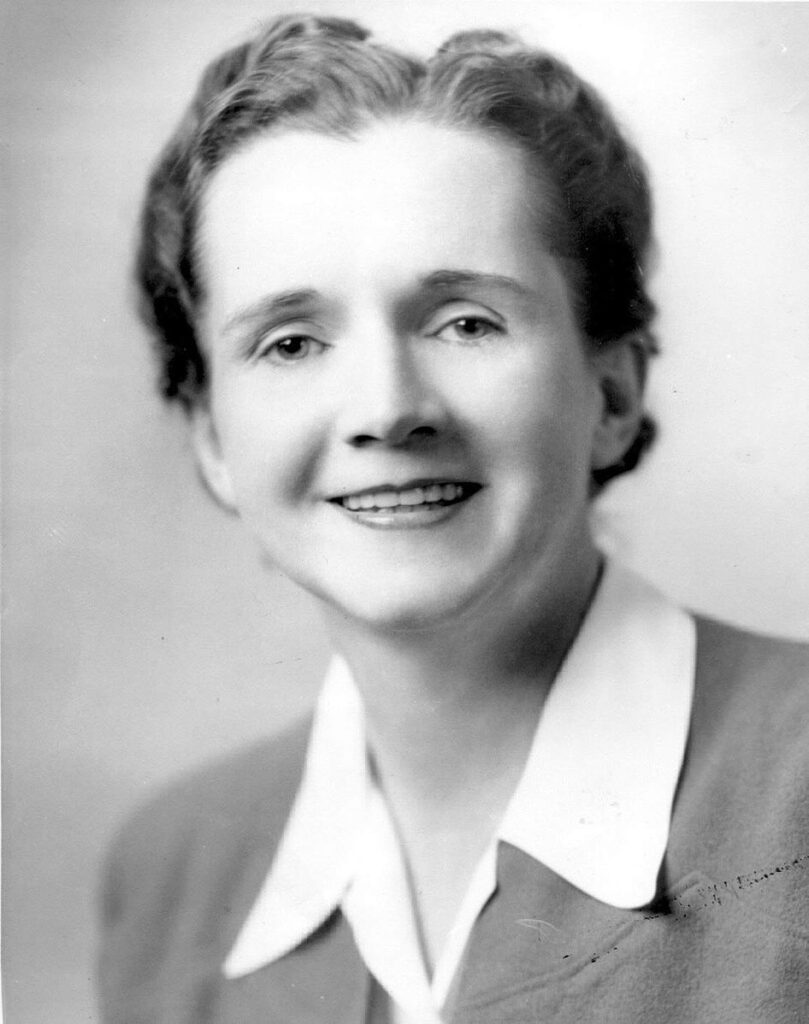Good news: This entire article is 100 percent planet-friendly! Here’s how we got a holiday celebrating the environment and arguing for its preservation.
SILENT SPRING
Author and biologist Rachel Carson won a National Book Award for The Sea Around Us, one of three 1950s bestsellers about the ocean. As the years wore on, she observed continually degraded natural environments, and helped pinpoint the widespread deaths of plants, birds, and other animals to the ever more commonplace use of industrial chemical pesticides, especially dichloro-diphenyl-trichloroethane (DDT). That was approved by the Department of Agriculture for safe use, but after she witnessed an aviary full of birds die after a plane flew nearby spraying DDT, Carson presented her argument against pesticides in Silent Spring. The 1962 book was received by the public as a shocking and salacious exposé and became a bestseller. It also introduced into common usage words like “ecology” and “environmentalism” while also popularizing and advocating their practice.

TEACH-INS
In the late 1960s, fervent environmentalists in the movement that Silent Spring helped launch, adopted the tactics of the concurrent anti-Vietnam War protest culture. In addition to holding “sit-ins” and demonstrations against the war, some anti-war protesters staged “teach-ins,” educational presentations to inform the public about the conflict. Environmentalists did the same, presenting the facts at public awareness events. Wisconsin Senator Gaylord Nelson participated in the ecological teach-in scene and organized the biggest one of all in 1970, a connected string of events around the country on April 22, 1970. At numerous festivals, fairs, and events around the U.S., more than 20 million people learned about environmental issues at what Nelson called “Earth Day.”
EARTH DAY IN ACTION
That massive groundswell of public support proved that Americans wanted more oversight and attention for environmental issues, and the federal government had to address that need. Eight months after the first Earth Day in 1970, the U.S. government formed the Environmental Protection Agency. It placed under one roof all of the various governmental bodies that looked at ecological protection and allowed for more efficient and direct action. Probably the single most impactful new law required by the EPA — all new projects and buildings proposed by the government would have to file and get approval for an “Environmental Impact Statement.” And bringing things back to Silent Spring — the EPA enacted a ban on DDT in 1972.








